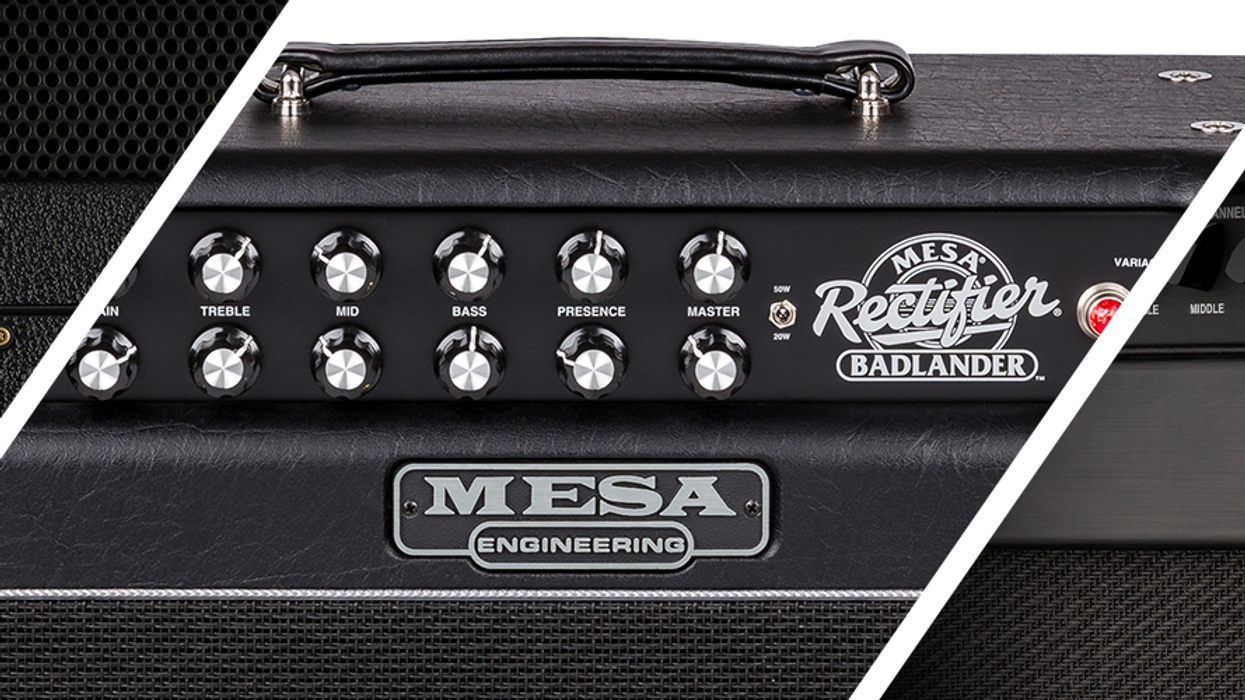Clip 1 - Clean, Drive-10 o'clock, Bass-11 o'clock, Mid-9 o'clock, Treble-2 o'clock, Level-Noon.
Clip 2 - Both Channels, Drive A-2 o'clock, Drive B-3 o'clock, Bass A-11 o'clock, Bass B-Noon, Mid A-9 o'clock, Mid B-10 o'clock, Treble A-1 o'clock, Treble B-9 o'clock, Level A-9 o'clock, Level B-10 o'clock.
Clip 3 - Channel B, Drive-3 o'clock, Bass-11 o'clock, Mid-10 o'clock, Treble-11 o'clock, Level-10 o'clock).
Electrical engineer and former Windhand bassist Nate Hilbish made his name as an amp designer with the PB-10: a solid-state preamp influenced by the legendary Sunn Beta Lead and Bass amplifiers. The heart of Hilbish’s PB-10 design is a somewhat unconventional clipping circuitry based on CMOS CD4069 chips—just like the Betas of old. The PB-10 so closely replicated the Sunn Beta’s front end that Melvins guitarist Buzz Osborne, who used Betas to lay the groundwork for sludge, grunge, and doom, replaced his Sunn preamps with Hilbish units.
These historical details are useful to consider when you play Hilbish’s first full-fledged amplifier, the Beta. It’s a PB-10 preamp paired with a 700-watt class-D power amp, bundled together in a sturdy rackmount package. For sludge, stoner, and doom players, it’s one of the most intriguing amplifier options on the market right now.
Set Me Straight
The build quality of our Beta review model was top-notch. Each amp is hand-built in Lynchburg, Virginia, using a sturdy steel chassis and as many locally sourced parts as Hilbish can get his hands on.
The front panel of our review model was finished in a gorgeous deep purple sparkle finish and treated with a thick clear coat that offered more-than-ample protection against road wear. The amp also comes in red, black, and turquoise sparkle finishes. And for the rack-less among us, a three-rackspace head sleeve is also an option.

Each channel features a dedicated input jack, 3-band active EQ, a drive control, and a channel volume, and all are clearly labeled and neatly organized within two horizontal rows. There’s also a third input jack that lets you play through both channels running in parallel. And you can switch between each channel or combine them using the included footswicth. The amp’s overall volume is governed by a single master volume control.
Each channel has a dedicated effects loop to create myriad patching and routing situations. A master effects loop sits on the back panel alongside two 4-ohm speaker outputs. The amp uses a universal power supply, so you can adapt to international voltages.
Ratings
Pros:
Exceptional build quality. Cool aesthetics. Gobs of gain and volume on tap. Can run both channels simultaneously in parallel. Affordable.
Cons:
Active EQ’ing might take some time to get used to.
Tones:
Ease of Use:
Build/Design:
Value:
Street:
$1,100 (rack unit only, sleeve $300 extra)
Hilbish Design Beta
hilbishdesign.bigcartel.com
Beta Test
Using the amp’s active EQ controls can take some getting used to. They really react like a set of frequency-specific boosters, and any increase in a given frequency is accompanied by an especially pronounced volume bump. This characteristic was a hallmark of the original Beta amps and a source of their immense volume capabilities. But it can result in nuanced effects and sound shifts, too, and putting in the time to master the EQ is well worth the effort.
I tested the Beta using a Marshall 4x12 loaded with Vintage 30s and a Gibson Les Paul Custom. With a flat EQ setting on channel A and the Gibson’s neck pickup, the amp delivered smooth and full clean sounds. I was surprised at how the amp naturally accentuates the midrange at flat EQ settings. making the tone sound round rather than cutting. The channel began to feel more open and airy as I pushed the gain knob up to 11 o’clock, resulting in a sweet, lively clean blues rhythm that got gritty when I’d dig into leads.
Channel B is the real star—showcasing the huge reservoirs of power the amp has on tap. With the gain at noon, I was treated to the same level of drive as a JCM800 on 10. It’s a glorious sound that doesn’t sacrifice note definition to the thick midrange and bowel-shaking low end. Even after I raised the gain to around 3 o’clock, effectively conjuring a vicious fuzztone from the circuit, individual notes remained clear. Pulling the gain back to noon and kicking in channel A in parallel made the tone much more three-dimensional. And with channel A’s gain set lower at 1 o’clock, I was able to add edge and attack by simply boosting the treble on that channel’s EQ.
The Verdict
Players who worship at the altar of heavy rock and honor the likes of Goatsnake, Electric Wizard and, of course, the Melvins, need to play this amp. Its full-bodied clean tones, judiciously sludgy overdrive, parallel channel operation, and monstrous volumes are all impressive enough to cause serious salivation. And to those that have scoured the Earth for a vintage Beta Lead or Bass, I’m pleased to say that you can finally call off the search.









![Rig Rundown: Russian Circles’ Mike Sullivan [2025]](https://www.premierguitar.com/media-library/youtube.jpg?id=62303631&width=1245&height=700&quality=70&coordinates=0%2C0%2C0%2C0)

















